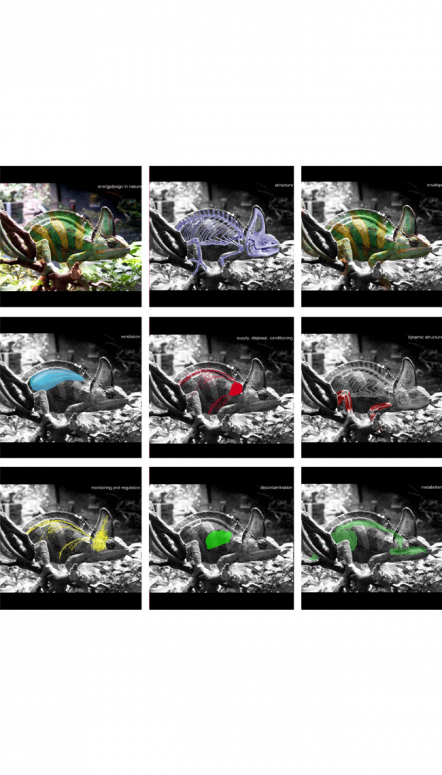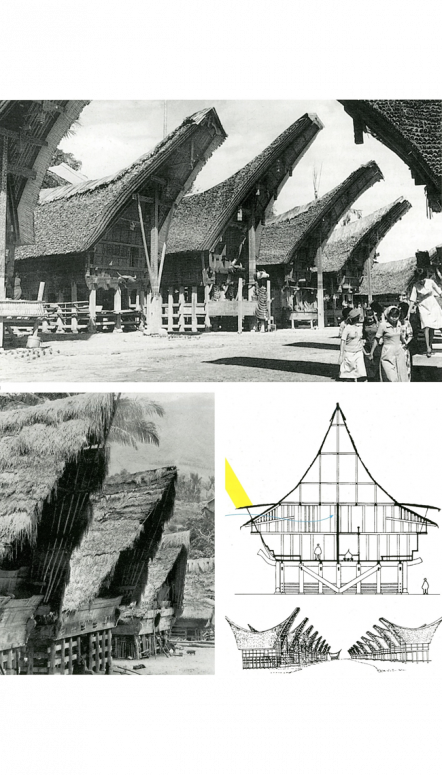


Bionics: One of the most fundamental principles of Energia Design design technologies is the analysis, understanding and study of natural systems, and the application of the knowledge acquired to buildings, ie. building bionics. The most demanding building-bionic 'metaphor' in the case of the Energy Design house is a natural aggregate system that creates a minimum of workable organisms with maximum energy efficiency: like a chameleon supporting structure, building shell, ventilation system, heat center and power supply network, moving structures, detoxification, recycling system the material-energy exchange system is only realistic if controlled by a monitoring and building control system. Leather - clothing - envelope: after natural skin and artificial clothing, the building skin has a different control, regulation, protective, aesthetic function due to its ability to separate the permeability of human skin 3. Due to the appropriate structure and material use. The human envelope, the skin protects against bacterial, chemical and physical influences, regulates moisture and temperature. Adaptation to different climatic conditions is one of the most important tasks of the skin, regulating the heat release of the human body by receptors with warmth and coldness, blood and hair. Temperature-dependent blood flow control changes skin's thermal conductivity. In the heat the blood vessels of the upper layers are completely flushed with blood, thus the heat release increases and the blood supply decreases with cold, together with the heat loss. The clothing creates an artificial shell. Can be picked up or removed like a "2. skin ". Protects from the weather and external physical impacts, heat, cool, absorb sweat and should not inhibit the breathing of the skin. Organic material satisfies the functional requirement of clothing. Regardless of the weather and the outside temperature the skin is dry, evenly warm and the blood supply works well. As a skin 3., the outer shell of the building has to perform similar tasks to the skin or clothing of the body. It creates and delimits external and internal worlds, while its pervasive property generates exchange processes. This only works if the concept of the shell is capable of many functions of human skin. In addition to the protection, the primary task of the house and the shell is to create the right building climate. The building is an organism who controls the material and energy exchanges of the external and internal space. To this, the shell must respond to different external climatic 'impacts' and 'impacts' from inside the interior, and energy and comfort needs to be met. The more feasible the facade, the lower the technical and energy costs, the building conditioning and ventilation can be solved. Vernacular Construction: Construction activity and operation is the most unmanageable and environmentally unfriendly human activity. If, however, paradoxically we talk about "ecology", more specifically ecological aspects in architecture, then we must always look back to the past with the utmost impulse. On the one hand because the history of mankind is the story of energy conversion, the logical and necessary product of development and development of which is the theme of ecology. On the other hand, because the traditional buildings of the prefossil era - though very rarely referred to as architecture - were energetically higher than most modern buildings. In all the Earthly inhabited areas, mankind has experimented and developed its traditional folk architecture methods for a long time, adapting buildings to their natural environment by simple means. Many of these methods, correctly transposed, can be re-applied: Energy Design house is a bridge between long-standing construction solutions and most future technologies.
